Seunggu Kim is a photographer who lives and works in Seoul, South Korea. He majored in photography at SM University and studied visual art at Korea National University of Arts. Kim tries would like to describe how we are living in his work. He thought photography could show our ‘real world’ and wanted to balance the unnatural elements in the rectangle frame and describe that we are getting used to the social ironies of reality.
Exhibitions have included Artbit Gallery, Post Territory Ujeongguk, Song Eun Storage / Song Eun Art Cube, Gyeonggi Museum of Modern Art, Art Sonje, Song Eun Art Space, Seoul Museum of Art, Seoul, Korea, and BMW Photo Space, Busan, Korea, Exco, Daegu, Korea.
Awards and Grants include Filter Space, Chicago, The Seoul Foundation for Arts and Culture, Korea, GoEun Art and Cultural Foundation, Korea, The Seoul Foundation for Arts and Culture, SongEun Art and Cultural Foundation.

Swimming Pool (2016)
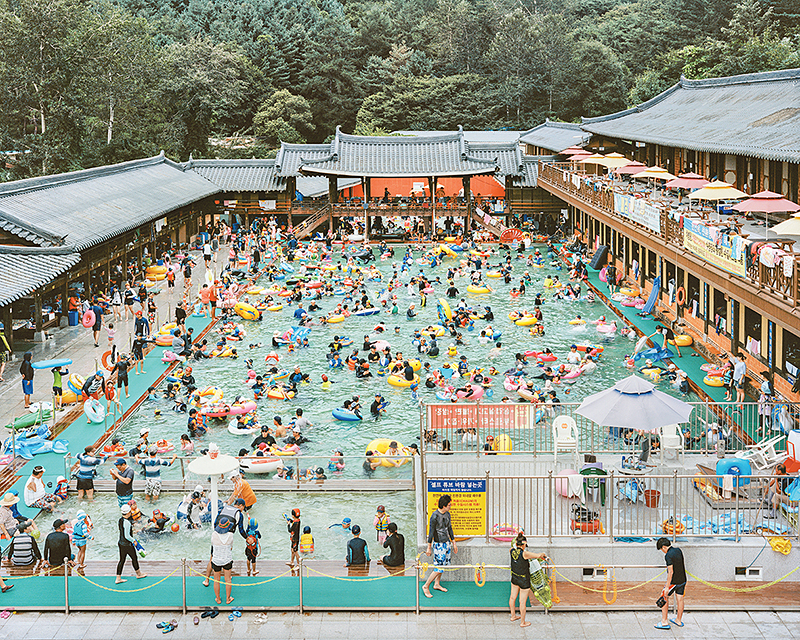
Hanok Swimming Pool (2017)

Ice Fishing (2014)
Better Days
Korea has been developed rapidly over the past 40 years, which caused a lot of social ironies. One of the ironies is long working hours with a very short break period. During vacation, Koreans try their best to enjoy it, but due to lack of time to travel, they spend time mostly around the city. Therefore, the leisure places around Seoul and the suburbs try to show something interesting to entertain their customers. By doing so, all of the Western and Korean cultures are mixed together. The “Better Days” describes Korean spectacles from the way they enjoy their short break.

Bamdokkaebi Market (2016)

Snow Festival (2014)
Hi Seunggu, thanks again for doing this interview. Let’s get right into it. Had you experienced these leisure parks as a visitor prior to documenting them?
Yeah, I’ve experienced them. I visit the same places a lot. Sometimes I go there to enjoy, but I always watch the situation or take pictures.
What initially drew you to photograph these parks and complexes?
When I was in my 20s, I was in school and had a part-time construction job. My role had been assigned by my circumstances. I wanted to feel freedom, but felt I could not. I wondered about the joyous leisure life of the people living in a city. In 2008 I started this project, in which I pick a certain place and explore it for one day. It was an opportunity to look at the leisure spaces around the city, slowly and carefully. Observing people’s day trips became my ‘day trip’ project. As I observed these scenes throughout the day, I saw many interesting things. But on another hand, it felt a little bitter that the people going back and forth between fatigue and desire, within the limited period of time, were revealing our reality.
Are there any underlying themes you’ve noticed while visiting so many of these places?
Recording the Korean landscapes is a big theme for me. For this project, I wondered what the Korean scenes were. I think Korea’s traditions were cut off due to historical incidents such as the Japanese occupation and the Korean War. Therefore, I do not think that traditional tile-roofed houses, hanbok, or pansori necessarily represent Korean values. Western culture imported recklessly after compressed growth had been distorted by Korean consumer culture. Now Korea has a lot of social contradictions because of the imbalance between economic growth and social consciousness. I wanted to express the balance of the unnatural things in a rectangular frame.
How have you seen Western culture influence these environments?
Western culture is still a kind of fantasy. The cultural factors are being used to create a suitable atmosphere for people’s consumption.
The contrast you highlight between “getting away” and yet still remaining in the same city you might work in, is nicely articulated in large format. You can see and feel all of the colors and energy of people vacationing, but the presence of the city and industry is never far. What camera do you make your images with?
I always use Wista 4×5 Field Camera (sometimes 8×10). You can retake pictures immediately after taking a picture with a digital camera. It’s very efficient at creating images. A better way is to make digital composite pictures. But I don’t just want to create images. I observe and think for a long time and try to understand the scene in front of us and our society.
You mentioned in the description that these leisure parks developed pretty quickly. Do you see that continuing to happen?
Of course. Seoul’s nickname is “Dynamic Seoul”. People don’t rest, the city changes without stopping.
Assuming that rapid growth continues, how do you see things developing or changing over the years to come?
Rapid growth does not necessarily lead to cultural growth. It’s already become a ‘pastiche society’. However, if a mixed culture harmonizes with Korea’s unique dynamic power, I think it could make ‘Better Days’.

Hongje Stream (2015)
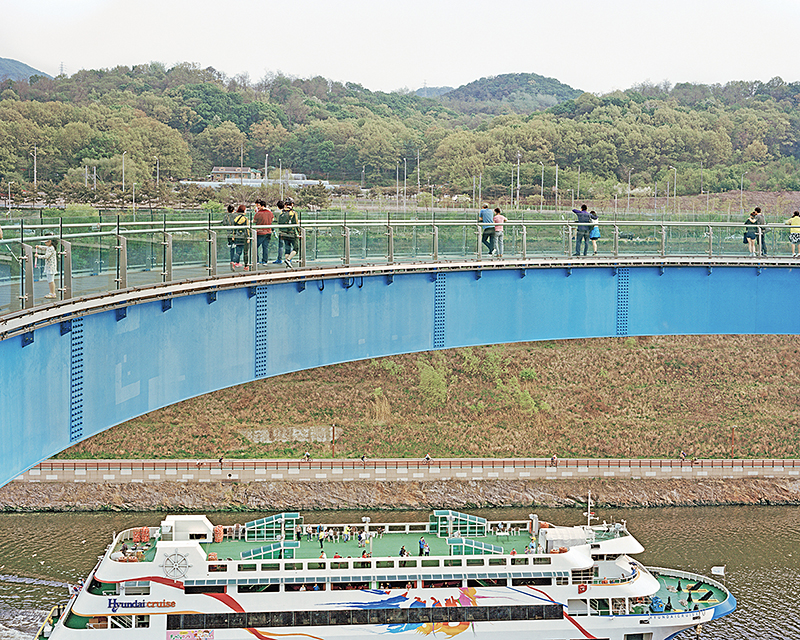
Arabaet-gil (2015)

Baekun Valley (2017)

Flower Festival – 2015

Dinosaur Theme Park (2018)

Panda House (2017)
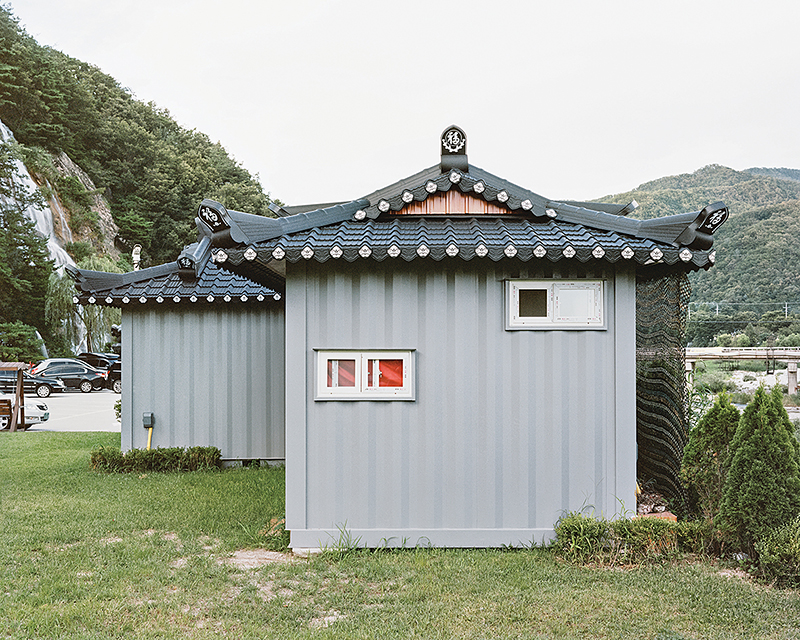
Separate Rooms (2017)

Bengal Tiger (2014)

Schloss Neuschwanstein (2016)

Singing Room (2013)

Pokpo Kalbi (2012)
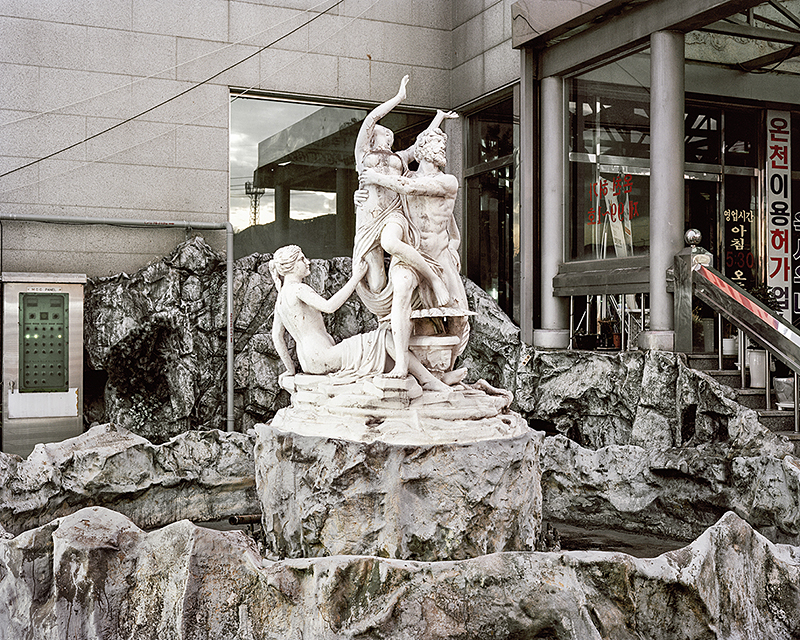
Poseidon (2017)

Pile of Artificial Ice (2012)

A Family (2014)
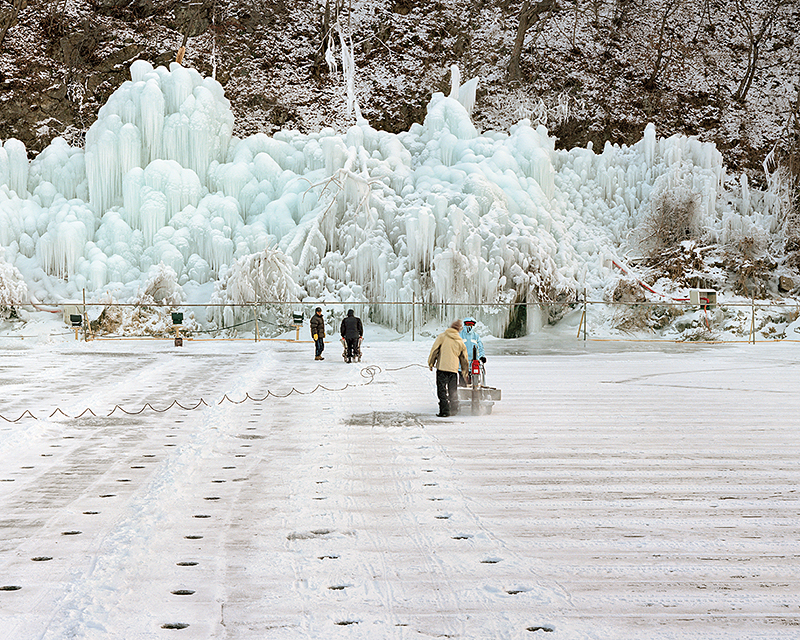
Winter Festival (2011)
To view more of Seunggu Kim’s work please visit his website.